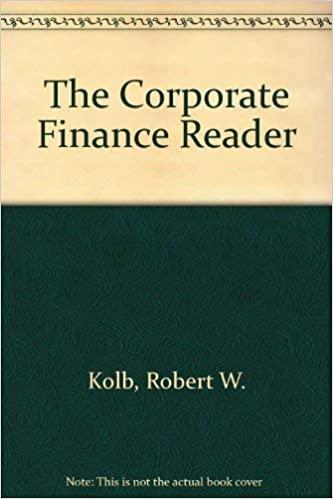Answered step by step
Verified Expert Solution
Question
1 Approved Answer
FIN 4 2 0 : Fall 2 0 2 3 Problem Set 1 Name _ _ _ _ _ _ _ _ _ _ _
FIN : Fall Problem Set Name
Section
Classify the following assets as either Real Assets or Financial Assets:
a Residential House: RealFinancial
b Corporate Bond: RealFinancial
c Lease Agreement: RealFinancial
d Professional Certification: RealFinancial
e Trademarks: RealFinancial
f $ Gold Coin: RealFinancial
A company aims to allocate its surplus funds for shortterm needs later in the year. Evaluate the following statements regarding the chosen investment and determine if the statements are True or False.
a It possesses high liquidity:
b It entails high risk:
c The yield is substantial:
d The maturity period is brief:
Your company plans to invest $ million in a month Treasury Bill. The quoted yield is
a Calculate the amount to be paid per Treasury Bill:
Identify the appropriate term for the following scenarios:
a A deposit in a Canadian bank denominated in US Dollars:
b A Eurodenominated bond issued by a Japanese bank:
c A Brazilian Realdenominated bond issued by a Spanish bank:
d A Swiss Francdenominated certificate of deposit in a French bank:
You are considering an investment in either a Corporate Bond or a Municipal Bond. The Corporate Bond offers a yield of while the Municipal Bond offers a yield of Your marginal tax rate is
a Which bond is the more favorable option?
b What marginal tax rate would make you indifferent between the two bonds?
You invest $ in Stock B at a price of $ per share, contributing $ and borrowing $ through a broker's call loan. If the price of Stock B drops to $ per share, and the maintenance margin is :
a Calculate your initial margin:
b Determine your new margin:
c How much must you deposit to restore your initial margin?
Section
You purchase a stock for $ years later, you sell it for $ What is the:
a HPR
b EAR
A stock has a Beta of and a standard deviation of The riskfree rate is the expected return on the market is What is the:
a Expected return of the stock?
b Sharpe ratio of the stock?
You examine the following metrics on a collection of stocks
A B C D
Eret
stdev
skew
kurt
a If youre a meanvariance optimizer, which stock is the bestworst stock to own if the riskfree rate is Justify with one measure.
b If youre concerned about large negative downmoves, which stock is the safestriskiest stock to own? Justify with measures.
c Assume Stocks C and D have a correlation of If you invest in C and in D what is the standard deviation of the twostock portfolio?
You invest $ in Stock A Looking at its historical returns, you observe the mean monthly return is and the monthly standard deviation is
a What is the Value at Risk at th percentile of your investment in Stock AAnswer in investment dollars
Section
You invest of your fund in a risky portfolio and in a riskfree asset. The risky portfolio has an expected return of and a standard deviation of The riskfree rate is
a Calculate the Eret of the complete portfolio
b Calculate the standard deviation of the complete portfolio
c Calculate the Sharpe ratio of the complete portfolio
From the question above, you measure your risk aversion metric A as equal to the market average of
a Calculate the optimal weight of your allocation to the risky portfolio
b Calculate the Eret of the complete portfolio with the optimal weight
c Calculate the ESD of the complete portfolio with the optimal weight
d Calculate the Sharpe ratio of the complete portfolio with the optimal weight
If you expect volatility on the risky portfolio from above to increase from a standard deviation of to a standard deviation of how will this affect the weight you hold on your risky portfolio?
A client comes in holding on the risky portfolio. The expected return on the market is the riskfree rate is and the standard deviation on the risky portfolio is What is the clients riskaversion measure?
Section
Stock X has a Beta of The riskfree rate is and the expected return of the market is
a What is the Eret of Stock X from the CAPM model?
Stock A has a market beta of a size beta of
Step by Step Solution
There are 3 Steps involved in it
Step: 1

Get Instant Access to Expert-Tailored Solutions
See step-by-step solutions with expert insights and AI powered tools for academic success
Step: 2

Step: 3

Ace Your Homework with AI
Get the answers you need in no time with our AI-driven, step-by-step assistance
Get Started


